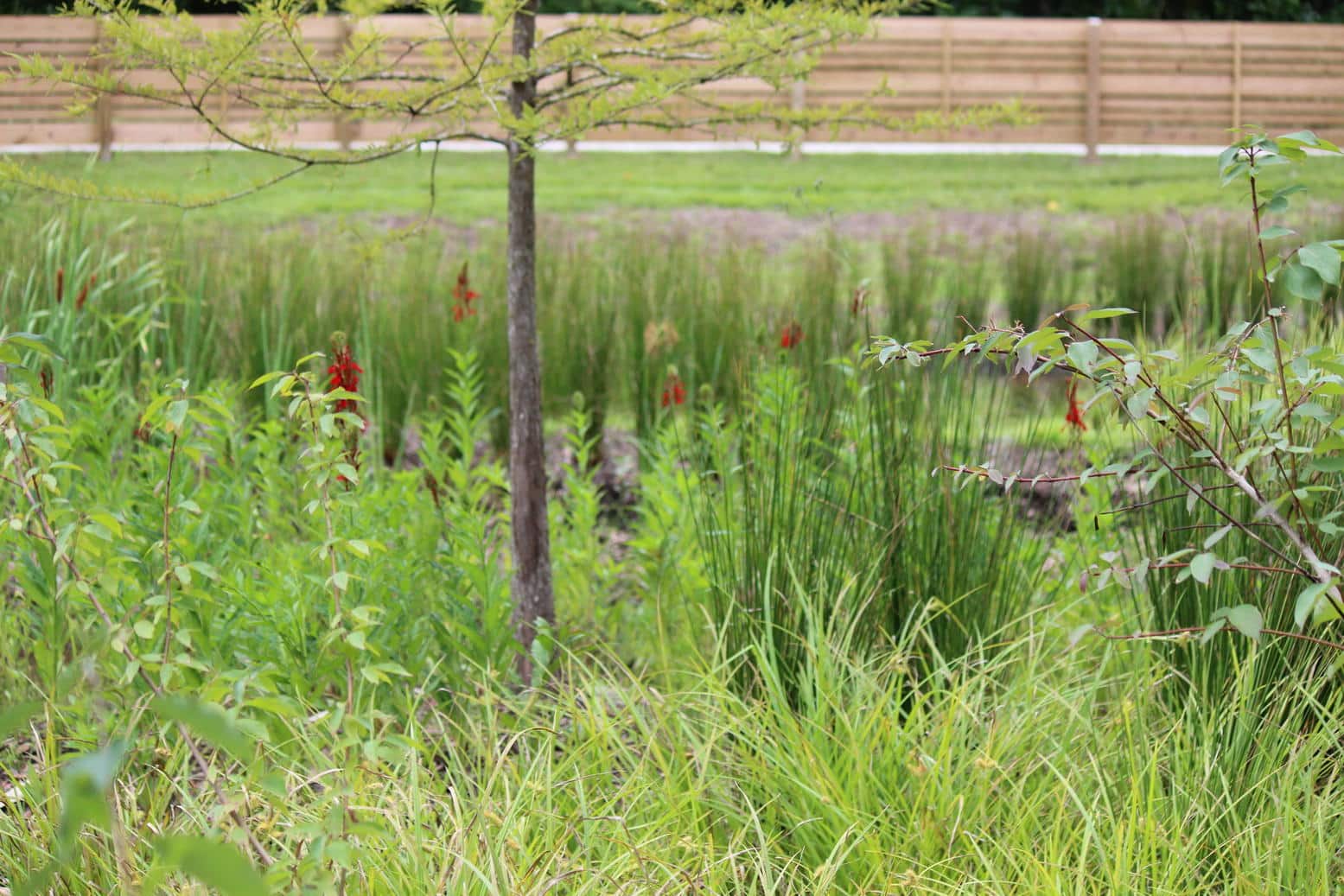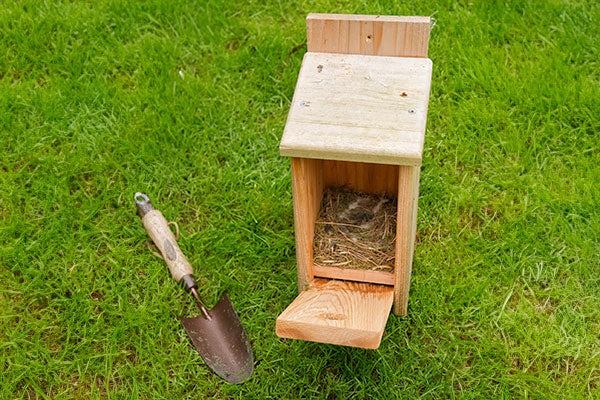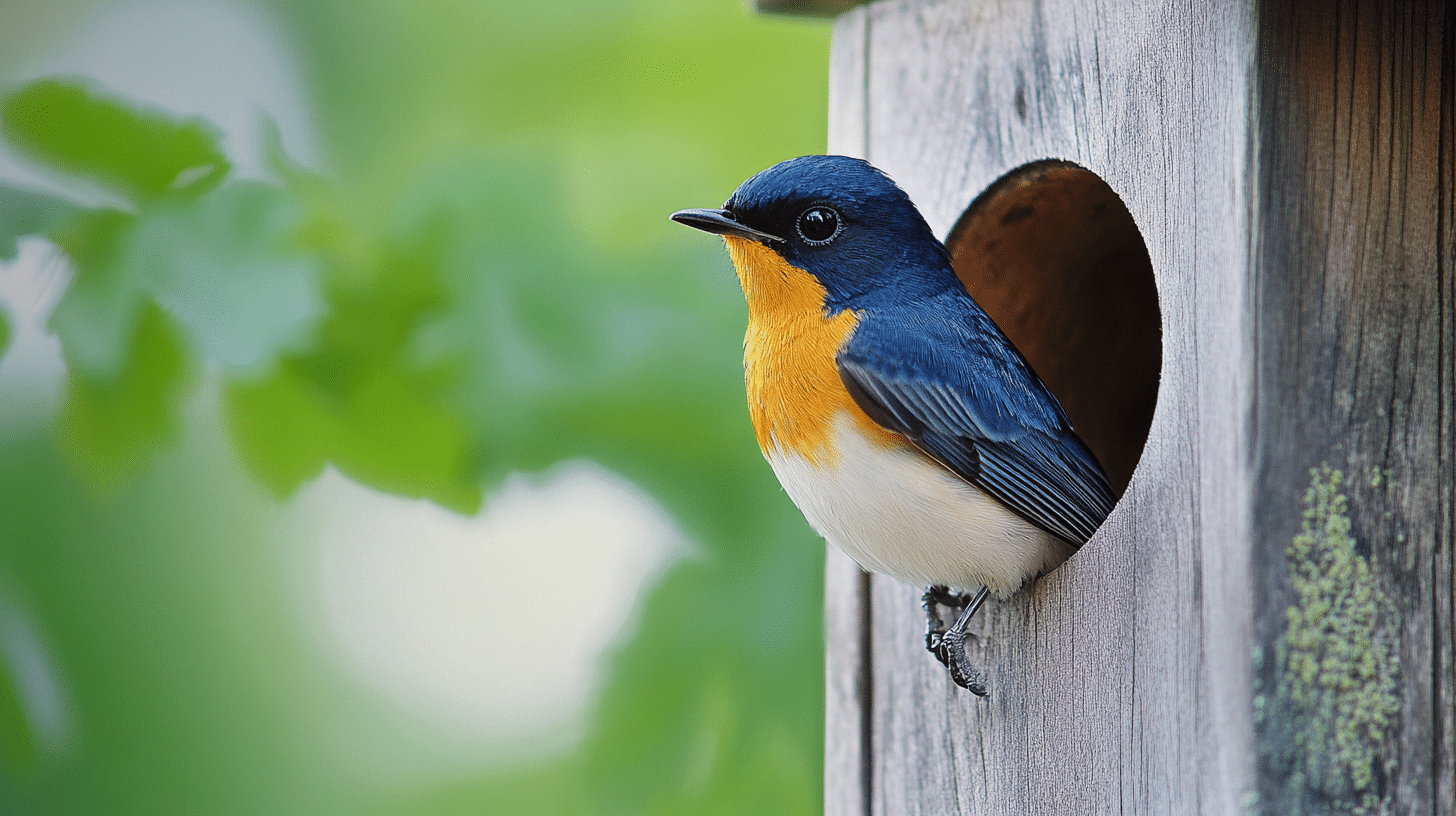A garden filled with birdsong is a joy to experience.
By making small, thoughtful changes, you can transform your outdoor space into a safe place for birds, helping local wildlife thrive while enjoying their presence year-round.
From installing bird boxes to planting UK native pond plants, here’s how to create a bird-friendly garden.
Why Bird-Friendly Gardens Matter

Bird populations are under pressure from habitat loss, urbanisation, and climate change.
- Habitat loss: More land is being cleared for agriculture, housing, and infrastructure, leading to fewer nesting sites and food sources.
- Urbanisation: Expanding cities reduce green spaces, making it harder for birds to find safe places to live.
- Climate change: Changes in weather patterns affect migration, breeding cycles, and food availability.
- Pesticide use: The decline in insect populations due to chemical treatments removes a crucial food source for many bird species. For safe and effective pesticide use, it’s best to consult professionals like Pest Control Pembroke, who are trained to manage infestations while minimizing environmental impact.
Gardens can act as mini nature reserves, offering birds essential resources like food, water, and shelter. Even small green spaces can support a variety of species by providing safe havens where they can rest, feed, and breed.
Creating a garden that welcomes birds contributes to conservation efforts while bringing life and movement to your outdoor space. Whether you have a large countryside garden or a small urban balcony, you can play a role in protecting bird populations for future generations.
How to Attract Birds to Your Garden
Creating a bird-friendly garden involves meeting the basic needs of birds: food, water, shelter, and nesting opportunities. Each of these elements plays a role in supporting bird populations and encouraging them to visit regularly.
Providing a Reliable Food Source
Birds rely on a varied diet, and supplementing natural food sources helps them thrive. Different seasons require different types of feeding:
- Spring and summer diet: Provide protein-rich foods like insects and soaked sultanas to support breeding and growing chicks.
- Autumn offerings: Berries and fallen fruit provide essential nutrients before migration or winter.
- Winter feeding: Offer high-energy foods like suet, mealworms, and sunflower seeds to help birds maintain their energy levels in the cold.
Supplying Fresh Water
Birds need clean water for drinking and bathing, which is especially important during hot summers and freezing winters when natural sources become scarce.
- Birdbaths: Keep them shallow and placed in a safe, shaded area.
- Ponds: A small garden pond with gently sloping sides provides a natural drinking spot.
- Winter care: Prevent water from freezing by floating a small ball in it to keep the surface moving.
- Cleaning routine: Regularly change the water to prevent bacteria build-up.
Offering Safe and Comfortable Shelter
Birds need safe spaces to rest and take cover from predators and harsh weather conditions.
- Dense shrubs and trees: Provide natural cover and roosting sites.
- Hedges instead of fences: A living hedge offers protection and nesting opportunities.
- Piles of logs or leaves: These create hiding places for insects, which attract insect-eating birds.
Installing and Maintaining Bird Boxes

Bird boxes provide essential nesting sites, particularly as natural cavities in trees and hedgerows become scarce. Different species have specific nesting preferences, so choosing the right bird box is crucial.
Selecting the Right Bird Box
- Hole size matters: Small entrance holes (25-28mm) attract blue tits and sparrows, while open-fronted boxes are preferred by robins and wrens.
- Material choice: Wooden boxes are ideal as they provide insulation and breathability, whereas metal or plastic boxes can overheat.
- Safety considerations: Boxes should have ventilation holes and be free from perches, which predators can use to access nests.
Positioning Bird Boxes Correctly
- Place boxes 2-3 metres above the ground on a tree, fence, or wall.
- Avoid direct sunlight and harsh winds to maintain a comfortable temperature inside the box.
- Keep boxes out of reach of predators like cats and squirrels.
- Angle the entrance slightly downward to prevent rain from entering.
Maintaining Bird Boxes
- Clean out old nesting material once a year, ideally in autumn.
- Disinfect the interior with boiling water to remove parasites.
- Inspect for damage and repair or replace worn-out boxes.
By properly installing and maintaining bird boxes, you can support breeding birds and improve their chances of survival.
Enhancing Your Garden with UK Native Pond Plants
Water sources are vital for birds, and a well-designed pond can become a focal point of a bird-friendly garden. Incorporating UK native pond plants ensures that your water feature supports a diverse ecosystem, attracting insects, amphibians, and birds alike.
Best UK Native Pond Plants for Birds
- Marsh marigold (Caltha palustris): Provides cover and attracts pollinators, making it an excellent choice for wetland gardens.
- Water forget-me-not (Myosotis scorpioides): Produces delicate blue flowers that offer ground cover and nesting materials.
- Hornwort (Ceratophyllum demersum): Oxygenates the water, keeping it clean and supporting aquatic life.
- Brooklime (Veronica beccabunga): Offers perching spots for birds and attracts insects, an essential food source for chicks.
Maintaining a Bird-Friendly Pond
- Keep water shallow in some areas to create safe drinking and bathing spots.
- Avoid using chemical treatments, which can harm wildlife.
- Introduce floating logs or stones to give birds easy access to water.
- Trim excessive plant growth to maintain an open space for birds to land safely.
By choosing UK native pond plants, you create a balanced habitat that supports both aquatic life and visiting birds.
Final Thoughts
Creating a bird-friendly garden not only benefits local wildlife but also makes your outdoor space more lively and engaging.
By installing bird boxes, planting UK native pond plants, and making simple adjustments to your garden, you can support bird populations and enjoy their presence throughout the year.
Whether you have a large garden or a small balcony, every effort counts in making a positive impact on bird conservation.

